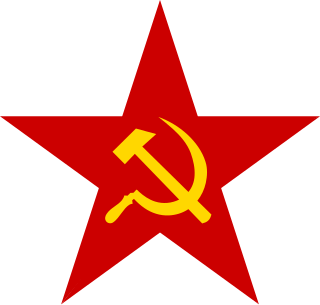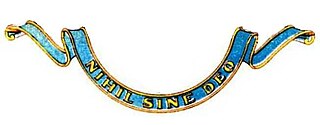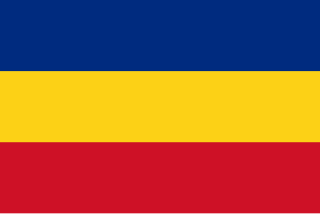 W
WThe Kingdom of Romania was a constitutional monarchy that existed in Romania from 13 March (O.S.) / 25 March 1881 with the crowning of prince Karl of Hohenzollern-Sigmaringen as King Carol I, until 1947 with the abdication of King Michael I of Romania and the Romanian parliament's proclamation of Romania as a putative socialist people's republic.
 W
WThe 1936 Craiova Trial was a political trial of some members of the Romanian Communist Party, part of the repression of communists in the Kingdom of Romania, judged by a military tribunal in Craiova.
 W
WThe Georgi Sava Rakovski Bolhrad High School ; Bulgarian: Болградска гимназия „Георги Сава Раковски“, Bolgradska gimnazia „Georgi Sava Rakovski“) is a gymnasium in Bolhrad, Odessa Oblast, southwestern Ukraine. Founded in 1858 at the request of Bolhrad's Bessarabian Bulgarian population, the Bolhrad Gymnasium is regarded as the oldest high school of the Bulgarian National Revival.
 W
WCarol II, the King of Romania from 1930 to 1940, was the focus of a cult of personality for much of the latter part of his reign. The cult peaked with the suspension of the 1923 Constitution of Romania and the establishment of a "royal dictatorship" in 1938. His personality cult shared some features with Communist leader Nicolae Ceaușescu's own personality cult that took root three decades later. Indeed, there have been a number of suggestions that Ceaușescu was inspired by Carol's cult.
 W
WThe Crown Council was an institution that advised the King of Romania. Informal between 1866 and 1938, it was formalized by the 1938 Constitution, in effect for two years. The forum met on occasions of great national importance. It had a purely advisory role, and was convoked by the King on the government's advice.
 W
WDanubian Principalities was a conventional name given to the Principalities of Moldavia and Wallachia, which emerged in the early 14th century. The term was coined in the Habsburg Monarchy after the Treaty of Küçük Kaynarca (1774) in order to designate an area on the lower Danube with a common geopolitical situation. The term was largely used then by foreign political circles and public opinion until the union of the two Principalities (1859). Alongside Transylvania, the United Principalities of Moldavia and Wallachia became the basis for the Kingdom of Romania, and by extension the modern nation-state of Romania.
 W
WDealul Spirii Trial was a political trial conducted by a military tribunal in the Kingdom of Romania. 271 members of the Communist Party of Romania were accused of treason after voting for the inclusion of the party into the Third International. The defendants were convicted and later pardoned.
 W
WThe Great Union or Great Union of 1918 is the name under which Romanian historians or Romanians in general commonly refer in Romanian historiography to the series of political unifications the Kingdom of Romania had with several of the so-called Romanian historical regions, starting with Bessarabia in 27 March 1918, continuing with Bukovina in 28 November 1918 and finalizing with Transylvania in 1 December 1918 with the declaration of the union of this region with Romania in the city of Alba Iulia. Romanians also consider several other events as preludes to the Great Union, such as the unification of Moldavia and Wallachia in 1859 or the independence of the country and the annexation of Northern Dobruja in 1878, and also the occupation of Transylvania and Moldavia by the Prince of Wallachia, Michael the Brave, in 1600.
 W
WThe Hungarian–Romanian War was fought between Hungary and Romania from 13 November 1918 to 3 August 1919. The conflict had a complex background, with often contradictory motivations for the parties involved.
 W
WThis is a list of communists imprisoned by the Kingdom of Romania for their political activity during the era of repression of communists, when the Communist Party and communist ideology were banned. Many of these communists belonged to the "prison wing" of the Romanian Communist Party, as opposed to the "Muscovite wing", which resided in exile in Moscow.
 W
W"Marș triumfal", or "Marș triumfal și primirea steagului și a Măriei Sale Prințul Domnitor" by its long name, was the first anthem of Romania. It is a piece without lyrics composed by Eduard Hübsch. In 1861, a contest was organized to decide the national anthem of the country with a prize of 100 golden coins. Hübsch was the winner, and the march was officially adopted on 22 January 1862.
 W
WNihil sine Deo, Latin for "Nothing without God", is used as a motto of the German Hohenzollern-Sigmaringen royal family and was the motto of both the former Principality of Romania and the former Kingdom of Romania.
 W
WThe Repression of communists in the Kingdom of Romania was political repression against people who held communist views in the Kingdom of Romania between 1921 and 1944. In 1921, a number of 271 members of the Socialist-Communist Party who voted for the affiliation of the party into the Third International were arrested and the following year they were tried and convicted by a military court to various terms of forced labour.
 W
WRomânul, was a political and literary newspaper published in Bucharest, Romania, from 1857 to 1905. Established as the leading voice of Romanian liberalism in the state of Wallachia, it had direct connections to the radical ideology of Western Europe. Its founder and director was the aristocrat C. A. Rosetti, known as Romantic poet, Masonic promoter and left-wing activist, seconded by the brothers Ion C. Brătianu and Dimitrie Brătianu. Românul's roots were planted in the 1848 revolutionary movement, whose press organ, Pruncul Român, was a direct predecessor.
 W
WSămănătorul or Semănătorul was a literary and political magazine published in Romania between 1901 and 1910. Founded by poets Alexandru Vlahuță and George Coșbuc, it is primarily remembered as a tribune for early 20th century traditionalism, neoromanticism and ethnic nationalism. The magazine's ideology, commonly known as Sămănătorism or Semănătorism, was articulated after 1905, when historian and literary theorist Nicolae Iorga became editor in chief. While its populism, critique of capitalism and emphasis on peasant society separated it from other conservative groups, Sămănătorul shared views with its main conservative predecessor, the Junimea society, particularly in expressing reserve toward Westernization. In parallel, its right-wing agenda made it stand in contrast to the Poporanists, a Romanian populist faction whose socialist-inspired ideology also opposed rapid urbanization, but there was a significant overlap in membership between the two groups. Sămănătorul's relationship with the dominant National Liberal Party was equally ambiguous, ranging from an alliance between Sămănătorul and National Liberal politician Spiru Haret to Iorga's explicit condemnation of 20th century Romanian liberalism.
 W
WThe Symbolist movement in Romania, active during the late 19th and early 20th centuries, marked the development of Romanian culture in both literature and visual arts. Bringing the assimilation of France's Symbolism, Decadence and Parnassianism, it promoted a distinctly urban culture, characterized by cosmopolitanism, Francophilia and endorsement of Westernization, and was generally opposed to either rural themes or patriotic displays in art. Like its Western European counterparts, the movement stood for idealism, sentimentalism or exoticism, alongside a noted interest in spirituality and esotericism, covering on its own the ground between local Romanticism and the emerging modernism of the fin de siècle. Despite such unifying traits, Romanian Symbolism was an eclectic, factionalized and often self-contradictory current.
 W
W"Trăiască Regele", also known as the "Imnul Regal", was the national anthem of the Kingdom of Romania between 1884 and 1948. The music was composed in 1861 by Eduard Hübsch, an army captain who later became the chief of the music department of the Minister of War. The lyrics were written by the Romanian poet Vasile Alecsandri in 1881, when Romania became a Kingdom.
 W
WThe United Principalities of Moldavia and Wallachia, commonly called United Principalities, was the personal union of the Principality of Moldavia and the Principality of Wallachia, formed on 5 February [O.S. 24 January] 1859 when Alexandru Ioan Cuza was elected as the Domnitor of both principalities, which were autonomous but still vassals of the Ottoman Empire and which resulted in the unification of both principalities. On 3 February [O.S. 22 January] 1862, Moldavia and Wallachia formally united to create the Romanian United Principalities, the core of the Romanian nation state.
 W
WThis is a list of warship classes built for the Romanian Navy that served during the Second World War.